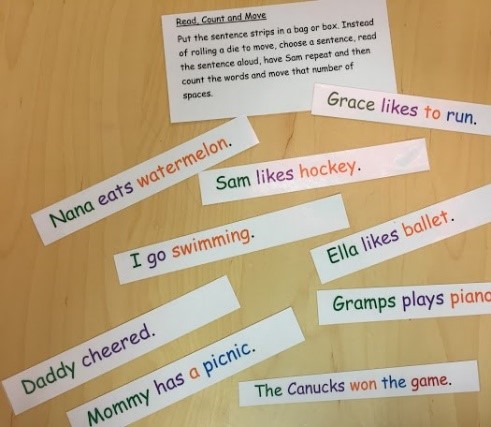Learn at Home Activities for Fluency
Fluency refers to the rate, expression, and smoothness with which a person reads. Although pacing is a part of it, we prefer to focus on the quality of reading over the speed. Fluent readers read as though they are talking. They attend to punctuation, use phrasing rather than reading word for word, use different voices to represent characters in dialogue, and change their tone and pace to reflect the mood of what they are reading.
Me, We, You Strategy
When introducing new reading material, use the Me, We, You strategy:
Me- You read the text to your child. Talk about new vocabulary that comes up. Be expressive!
We- Read the text together. This stage helps with accuracy because your child has support with unknown words before they are expected to read them on their own. You may need to stay at this stage for some time before asking your child to read independently.
You- Have your child read the text.
Easy Reads
Provide a collection of books that your reads fluently. Allow them to choose one of these books to read at the start of a reading session, so that they are starting with success. Give specific feedback, for example, “You read that book at just the right speed. Let’s read it again. This time, remember to look at the exclamation marks and read those sentences in an excited voice.”
Personal books
Children are often more motivated to read books that have been created for them using pictures of themselves and family or high interest topics. It is helpful to involve your child in talking about the pictures and writing the sentences together. Using their own language will help them read more fluently, specifically with respect to phrasing and accuracy.

Sentence Strips
These can be sentences about pictures, summaries of books they have read (3-4 events, can also used to work on sequencing), or sentences written to practice a specific skill (reading exclamation marks, learning a word they are having difficulty with by using it in a number of different sentences). Make it more interesting by storing the sentence strips in a fun container and rolling a die to decide how many sentences they will read, for example. You can also use these as part of a board game- instead of rolling to move, have each player choose a sentence, read aloud and then count the number of words in the sentence to determine how many spaces to move!
Repeated Readings
Have your child re-read books they enjoy and challenge them to focus on a specific aspect of fluency, for example, ask them to pay attention to the punctuation and try to read the sentences ending in exclamation marks with more excitement. Model what this sounds like.
Change the Punctuation
Write a sentence from a book or a topic of interest and change the punctuation each time you read. Model how it sounds differently for each and have your child imitate.
Identify New Vocabulary
Identify names of people and places and words that may be unfamiliar before reading the text. Talk about the meaning and provide opportunities for your child to practice reading these words before they encounter them in the book. Highlight these words in the text if possible.
Themes and Series
Choose multiple books with the same theme or from the same series. Reading books with similar vocabulary, storylines and/ or characters is helpful. It allows your child to carry over information they have learned to the next book which aids in sight word recognition, fluency and comprehension.
Rehearse with a Purpose
Encourage your child to read the same text multiple times by giving them a reason to ‘perfect’ it. For example, if your child enjoys making YouTube videos, you could challenge them to practice reading a ‘script’ for their video before recording it. You may need to help them with the writing of the script, and then they can practice reading it to various people and do a few trial runs on video before recording it for YouTube. If your child has a new favourite song that they like to sing along to, consider printing the lyrics and having them read them a number of times along with the song playing quietly in the background, then record on video to share with family and friends!
Reader’s Theatre
This is a motivating way to work on expression, as the reading parts are short and the focus can be on intonation, pace and volume rather than decoding. “Rehearsing” the parts multiple times will increase automaticity. This could be fun for the whole family! Scripts can be found here. Consider re-writing the script (copy and paste, then format) in larger font if you think the original version will be difficult for them to follow. You can also highlight your child’s part, leaving out the character name and ‘stage directions’ as these can be confusing.
Listen to Reading
Listening to more mature readers read is a great way to develop fluency. Increasing access to books so that your child can enjoy more literature on their own is also a great goal. Have your child listen to books read by you or a sibling, on CD or audiobook or online before asking them to read independently, or just for entertainment without the expectation of independent reading. Some fun and humorous picture books read by actors can be found here. This site has both picture books and non-fiction, as well as the option to turn narration on for the first few times and then turn it off so your child can read on their own.
